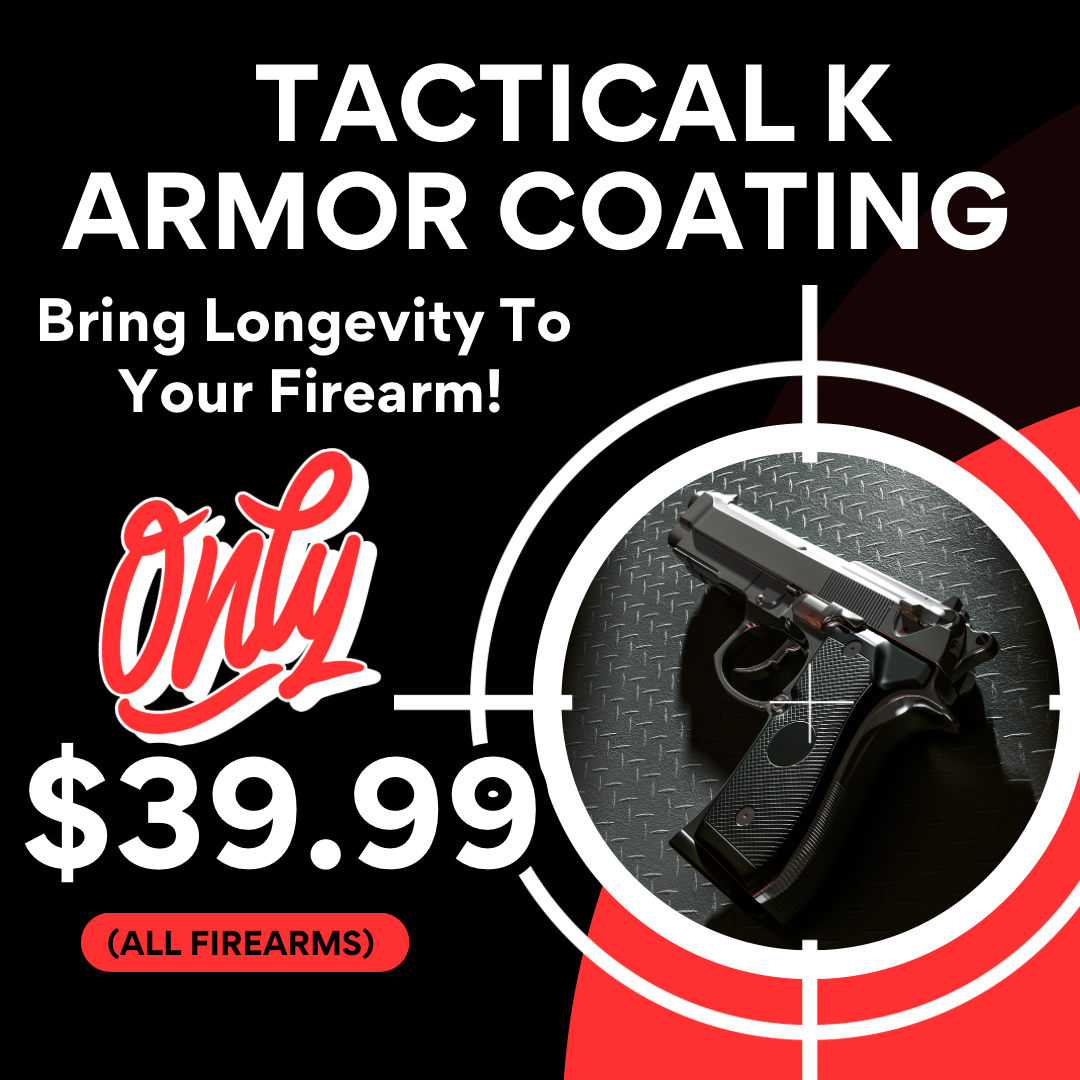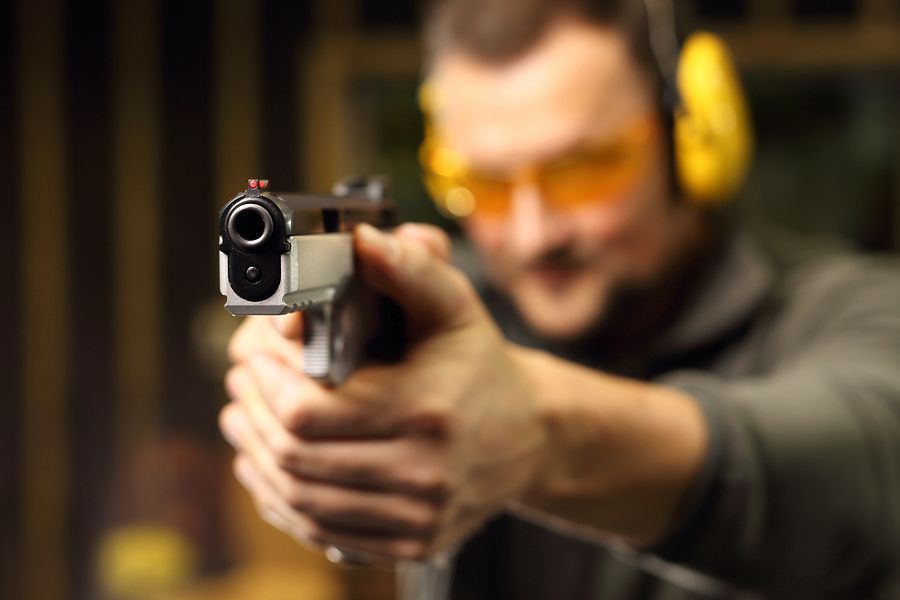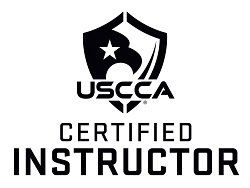Gregory Kielma • September 5, 2025
Our Cities Are Being Taken Over and Going TO HELL
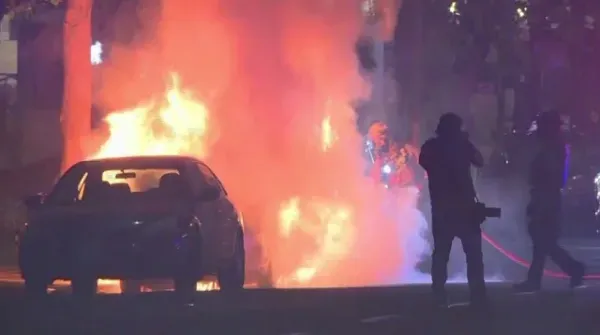
Our Cities Are Being Taken Over and Going TO HELL
Says Gregg Kielma FFL and Firearms Instructor, "please stay safe and be ready".
An expert in crime prevention and reduction told Fox News Digital that the recent rash of urban organized street takeovers leaves residents in fear, and feeling like authorities don't have control over the streets they are supposed to protect.
"Whether you're having dinner or studying or getting ready to go to bed, they're loud. They're disorganized. They're not good for the neighborhood or the city," said John Jay College of Criminal Justice professor Peter Moskos. "And it also gives the perception, rooted in reality in this case, that nobody's in control."
Over the past few weeks, there have been at least nine such high-profile incidents across the country.
Moskos was a police officer in Baltimore's Eastern District, a notoriously rough part of the city, before becoming an academic. He is also the author of the recently published book "Back from the Brink: Inside the NYPD and New York City's Extraordinary 1990s Crime Drop."
"And that creates fear," Moskos continued. "It creates a disconnect with what you expect government to be able to do, which is to, at a basic extent, just maintain public order.
"They're dangerous to the public. They're dangerous to participants," he said. "But there's also the quality-of-life factors that if you live near where this is happening repeatedly, you just simply don't want it happening."
On Aug. 9, around 50 vehicles wreaked havoc outside the Crypto.com Arena, home of the NBA's Los Angeles Lakers and the NHL's Los Angeles Kings, doing donuts and burnouts while onlookers set off fireworks and shot paintball guns at vehicles, according to KTLA.
Two people also reportedly broke into a storefront and looted merchandise during the event.
Stemming from a recent street takeover in Carson, California, part of Los Angeles County, authorities reportedly arrested 64 spectators and towed 25 vehicles. Two vehicles were impounded for 30 days, and eight traffic citations were issued.
Moskos said the first step to tackling the phenomenon is to understand why it's happening. He said it has become "cool" in the eyes of the participants, and that one way to make street takeovers uncool again is for politicians to have the will to crack down on the practice.
"The politicians in charge need to say this is unacceptable, and we're going to end it. It is possible to end that. We can change culture. We can certainly stop people from engaging in this one activity, but there are going to be consequences," he said.
Social media plays a role in the continued trend.
"Given that everyone has a phone, there is going to be social media attention to this. But that is part of the appeal," he said.
On Aug. 13, 200 bikers took to the streets in Tampa, Florida, swerving through traffic and on sidewalks, flying through intersections and doing wheelies.
"We definitely felt that there was an extreme danger at that point, and we needed to address it," said Tampa Police Maj. Les Richardson," according to FOX 13.
On Aug. 16, "hundreds of people and cars" swarmed Home Depot, In-N-Out and Target parking lots in what was described as an "illegal" street takeover in Seaside, California, according to KSBW. The local police department said it is planning enforcement actions for future takeovers.
On the same day, 100 cyclists, e-bike and dirt bike riders took over a Boston highway, terrifying local drivers. The incident resulted in a collision with a Massachusetts State Police vehicle. Only one person was arrested.
In Charlotte, North Carolina, police announced on X that 98 people were arrested during the week of Aug. 11 for their roles in numerous street takeovers throughout the city.
"Here we are again... because apparently some folks still think turning intersections into racetracks is a good idea. We're here to remind you – it's NOT. Still illegal. Still dangerous. Still getting shut down," the Charlotte-Mecklenburg Police Department said. "Street stunts have consequences! And we'll be here to remind you of that, every time."
Along with the arrests, police said numerous vehicles have been seized in connection with the takeovers.
On Aug. 18, the Dallas Police Department, which has a Street Racing Task Force, responded to a street takeover that included a "large group of motorcycles, dirt bikes and off-road vehicles doing stunts, blocking both directions of travel, and driving dangerously."
Police said that 30 citations were issued for various violations of license, registration and insurance laws. 12 e-bikes and dirt bikers were seized.
"We enforce Texas laws to keep our streets safe," said Maj. Gabriel Candelaria, commander of the Northeast Patrol Division. "Our streets are not a stage for stunt driving and reckless behavior."
As for solutions, Moskos said that if the culture doesn't change, other methods can be explored.
"Maybe the answer is to put physical obstacles in certain places when it's safe to do so," he said. "And again, these have to be figured out at the local level, and again, ideally in cooperation with neighborhood groups, with other city agencies. But it is something that we can police our way out of."
In early August, a Cleveland City councilman, Michael Polensek, witnessed and video recorded a street takeover in the city, according to Cleveland 19 News. He observed multiple vehicles without license plates taking part in the charade.
A 911 caller reportedly said, "approximately 500 dirt bikes are blocking three gas stations."
"Charge them for going through the red lights, charge them for endangering motorists -- go after these people because unless you do that, it’s not going to stop and someone is going to get hurt, and someone’s going to get killed," Polensek told the news outlet.
In Cincinnati, 17 cars were involved in an early August Street takeover. Four vehicles were impounded stemming from that incident.
All in all, the crackdowns will have to continue until street takeover ringleaders and participants are totally deterred.
"You can't just say one and done and say, 'Look, we arrested 100 people, therefore it's a success.' No, in a way, you arrested 100 people, [and] that was a failure," said Moskos. "It might be the path toward success, but you just have to keep it up till people change their behavior. I mean the thing about policing is it is a verb, and it's not always done by police. But you're trying to police behavior and it can be done."

5 accused antifa supporters plead guilty to terrorism offense in ICE facility shooting that wounded LEO By Jamie Stengle Associated Press DALLAS — Five people pleaded guilty Wednesday to terrorism-related charges after they were accused of supporting antifa in a July shooting that wounded a police officer outside a Texas immigration detention center. The charges brought by the Justice Department followed President Donald Trump signing an order that designated antifa as a domestic terrorist organization. Trump has blamed antifa for political violence. FBI Director Kash Patel has previously said the charges in Texas are the first time a material support to terrorism charge has targeted antifa. A police officer was injured in the July 4 shooting near Dallas outside the Prairieland Detention Center, where federal prosecutors say an antifa cell carried out an attack that included gunfire and fireworks aimed toward the facility. Nathan Baumann, Joy Gibson, Seth Sikes, Lynette Sharp and John Thomas each entered guilty pleas to one count of providing material support to terrorists in federal court in Fort Worth. They face up to 15 years in prison at sentencing. Sharp’s attorney, Erin Kelley, said entering the plea was “step one in a long process” before the sentence is actually determined. Lawyers for the other four defendants either did not immediately return messages Wednesday or comment. Cases against others also charged in the shooting remain ongoing. According to court documents, one member of the group outside the facility yelled “get to the rifles” and then opened fire as officers responded, striking an Alvarado Police Department officer in the neck area. He fell to the ground but was able to return a few shots. Prosecutors say more rounds were then fired at the wounded officer and an unarmed DHS correction officer. Court documents say Gibson, Baumann and Sikes were among those who were present the night of the attack and were arrested shortly after, while Sharp and Thomas were among those who helped the accused shooter avoid arrest until July 15. Others are scheduled for arraignment in the case next month, including Zachary Evetts, whose attorney, Patrick McLain, has said he’s seen no evidence to support the government’s view of the case. “Mr. Evetts has never been a member of anything like a ‘North Texas Antifa Cell,’ and from the evidence provided to us by the government so far, there is no evidence that such an organization ever existed,” McLain said Saturday. Days after that shooting, a man with an assault rifle fired dozens of rounds at federal agents and a U.S. Border Patrol facility in McAllen near the Mexico border, injuring a police officer. Authorities shot and killed the attacker.

Dalmin Muran DEPUTIES ARREST SACRAMENTO MAN AND SEIZE LARGE WEAPONS CACHE AFTER SUSPICIOUS ACTIVITY AT LOCAL SCHOOLS, BAILS OUT HOURS LATER Last week, the Sacramento County Sheriff’s Office Threat Management Unit, with assistance from the Sheriff’s Office Special Enforcement Detail (SED), Critical Incident Negotiations Team (CINT), and multiple other specialized tactical units, executed a search warrant on 29-year-old Dalmin Muran following an ongoing investigation into concerning and escalating behavior. The investigation was started after Muran was repeatedly observed engaging in suspicious activity at local schools in East Sacramento County, including Rosemont High School. In one instance, Muran drove his vehicle onto school grounds during nighttime hours and was seen wearing military-style clothing and night-vision optics. He complied when contacted by security, who told him he had to leave, despite insisting he should be allowed access since the schools are “public grounds.” He claimed to have prior military service during other contacts, although it was determined he never had . Muran also expressed interest in joining law enforcement. During the execution of the search warrant, Deputies recovered multiple law enforcement patches and tactical gear, including those from the Sacramento County Sheriff’s Office. They also discovered numerous firearms that had been modified from their original California-compliant configuration. One unserialized short-barreled rifle (sometimes referred to as a “ghost gun”) was also located hidden in the attic as the warrant was being served, along with hundreds of firearm parts and components used to build or alter weapons. Deputies also found multiple smoke grenades, flash bangs, and pepper spray deployable smoke grenades within the residence, further contributing to public safety concerns and the seriousness of the investigation. Muran was booked into custody at the Sacramento County Main Jail for multiple felony charges but was released on bond hours later. Detectives are concerned that there may be unreported incidents in which Muran represented himself as law enforcement and/or attempted to enforce laws. The Sheriff’s Office urges anyone who may have had suspicious contact with Muran, particularly instances in which he represented himself as law enforcement or attempted to enforce laws, to contact the Sacramento County Sheriff’s Office Threat Management Unit immediately through our non-emergency line at (916) 874-5115 for follow-up. The investigation remains ongoing.
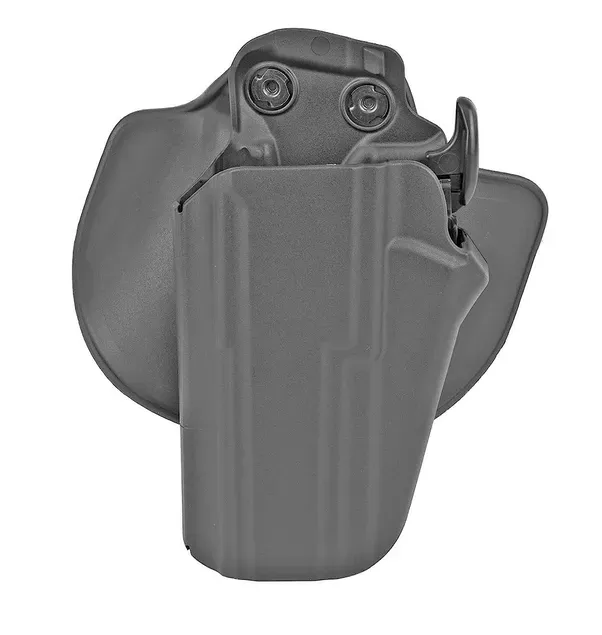
Why do policemen carry their sidearms in open holsters? Is it easy for anyone to grab them? Gregg Kielma Unknown to most people with casual familiarity with firearms, virtually all holster (especially those used by law enforcement) have a locking system, even if it isn’t easily seen. In fact, I don’t know of any police departments that doesn’t require one on holsters. Now some are much more effective than others, but almost all of them require one. For civilians, especially if carrying concealed, this system just uses tension, but even most civilians use holsters with a locking system that needs to be disengaged before drawing a firearm. The best locking systems can, with practice, be disengaged while drawing, in one smooth action. The holster above is from Safariland and uses their GLS locking system . On the right-hand side is a small protrusion which is a lock release. If you are drawing correctly, as you grab the firearm your finger should automatically hit and release it. While it takes some practice to make it completely smooth, most concealed carriers and law enforcement should already be practicing their draws at least once a week. On the other hand, if you are unfamiliar with the system (which 99% of the general public is) you’ll have no clue how to disengage the lock and will only end up pulling the wearer’s pants up an inch or two. Even if you pulled hard enough to remove the holster completely from the wearer’s pants, you still wouldn’t be able to use the firearm as all proper holsters (which is all the holsters Safariland makes) completely cover the trigger (never buy a holster that doesn’t completely cover the trigger). Many manufacturers produce similar holsters that use their own unique proprietary systems, the one below just happens to be the one I’m most familiar with.

Gregg Kielma in his GUN SHOP What is an "idiot scratch" on a firearm? Kielma says, if you scratch your firearm, I can fix it for you. Give me a call and I’ll do my best to make it look new again. Let’s TAKE A LOOK at a friend and my thoughts. The 1911 is one of the most iconic handguns in the world. Dozens of manufacturers make them. You might find a cheap, used 1911 for as little as $200 if you shop. On the other hand, you could find a Cabot 1911 for around a million dollars. Regardless of how expensive it is, a 1911 is venerated within the gun community. Beloved. An “idiot scratch” is something you see most commonly on 1911s, especially those owned by inexperienced or careless gun owners. I don’t agree with calling anyone an idiot. I don’t think of myself as incompetent. I have a scratch. It just isn’t obvious. How does that happen? In my case, it was just the fact that I’ve disassembled and reassembled that thing in a lot of different scenarios, including in low light situations. I’ve probably disassembled and reassemble it literally hundreds of times for various reasons (including converting it to a .22lr pistol). Why does it happen? It has a spring in there pushing a peg forward. If not careful the spring will “pop” out and could scratch your firearm. The peg makes it slightly more difficult to get this slide stop in place. That’s what scratches your frame. People who are new, careless, or whatever sometimes sweep up to get that slide stop in place. Now remember that while you’re doing all that, you’re also holding the slide back just the right amount to get it all to line up so that the notch in the slide fits. Accidents happen. It isn't that big of a deal. I could probably buff mine out, it’s so light. I just don’t care. My 1911 is one of my least favorite guns to shoot. That’s why it sits in the safe 99% of the time when I go to the range. I’d rather be shooting my CZ 97B. I don’t care about such things and don’t judge people who have marks. They could be exceptional shooters and just… not care about cosmetics. Maybe it isn’t even their mark but rather one caused by the last owner. It doesn’t affect function. It’s just… guys giving each other the business, like “Clips” vs. “magazines.” Lol If you scratch your firearm, I can fix it for you. Give me a call and I’ll do my best to make it look new again.

Do gun owners realize there is a limit on how many guns they can own at a time? Thoughts from an avid reader of the blog. What’s your thoughts on this? It is true. But we don’t like to talk about this subject much. When I was a bachelor living in an apartment, a gun safe was impractical. And closets were…packed. So I had 4 cased rifles under my bed. When I was married and had kids, the gun safe was practical. I filled it. Now that we are empty nesters and less demands on my wallet…. I asked Senior Management if I maybe could get a bigger gun safe to put a few more guns in? Senior Management went all practical and rational (I hate when that happens), “Why do you need more guns? You hardly shoot the ones you have!” So, I bought a case of ammunition instead. Keep up the good work by asking anti-gun questions. It reminds us of the haters lurking out there. Do yourself a favor, stock up on guns and ammo. I will note that I am a typical redneck American gun nut. Working in technology, have couple degrees, bit over 800 books in my Kindle. Accuracy snob. Uninterested in anything rapid fire - hit with the first shot saves both time and ammo. Served in the reserves. Ready to protect the weak from predators - except we don’t even tolerate that here in the first place. Can’t remember how to skin a deer, it’s been years. Can build a campfire. live in the woods for a weekend on canteen of water and 3 trail bars, been even longer. Can remember how to train youngsters on safe handling and excellent marksmanship, recent as last week.

More Mixed Signals From The U.S. Justice Department On Second Amendment Support We’ve reported lately how the U.S. Department of Justice (DOJ) seems to have a somewhat schizophrenic attitude when it comes to supporting the Second Amendment. On one hand, the DOJ claims to be doing everything it can to restore Americans’ 2A rights. On the other hand, DOJ attorneys will defiantly argue in support of an obviously unconstitutional infringement. In late November, the Firearms Policy Coalition (FPC) and Second Amendment Foundation (SAF) lambasted the DOJ for trying to limit a critical Second Amendment court ruling. After a court ruled that the nationwide ban on concealed carry in post offices is unconstitutional, the DOJ filed a motion to limit the scope of the injunction to only the named individual plaintiffs and to members of SAF and its partner organizations, but only to those who were members when the complaint was originally filed and who have been identified and verified. In other words, the government wants to keep the ban intact for the rest of America’s lawful gun owners. “The critical thing to remember here is that the government is fighting tooth and nail to continue enforcing an unconstitutional law against as many people as possible,” SAF Executive Director Adam Kraut said. “The DOJ’s position that it would be ‘impossible’ for it to know who was protected by the injunction without a membership list is just plain silly. If officials want to know if someone found to be carrying at a post office is a SAF member, they can simply ask.” Less than a week later, Reuters published information about a leaked DOJ plan to expand gun-rights protections with a new office in its civil rights division dedicated to enforcing the U.S. constitutional right to bear arms. The office, called the Second Amendment Rights Section, is expected to open on December 4 and will be dedicated to investigating local laws or policies that limit gun rights, something the Trump Administration has promised since its first week in office.

Michigan Governor Whitmer Surprise: Whitmer’s Anti-Gun Task Force Says Stricter Gun Laws Are The Answer To Violence Mark Chesnut “Garbage in, garbage out” is an old computer science axiom that describes how flawed, biased or poor-quality input will produce equally flawed, biased or poor-quality output. Of course, the principle doesn’t only apply to computer science. The entire gun control world often operates on this same premise. So, consider how unsurprising it truly is that a task force that Democrat Michigan Gov. Gretchen Whitmer created to make policy recommendations to curb violence is urging state lawmakers to ban the possession of so-called “assault weapons” and “large-capacity” magazines. According to a report at michiganadvance.com, Dr. Natasha Bagdasarian, the state’s chief medical executive and the task force’s chair, said the group used a “public health” approach to addressing “gun violence” in the state. “There are a lot of issues here that have not historically been thought of as public health issues, and only when we’ve taken this really comprehensive public health approach have we been able to implement real change,” Bagdasarian told the newspaper. “Gun violence is one of those issues.” It’s easy to immediately see how much garbage went into this project, resulting in the garbage that came out. First, Whitmer tasked the group with finding an answer to the “gun violence” problem. That is, indeed, garbage.

Florida: Pro-Gun Bill Repealing Adult Age Discrimination Advances to House Vote Yesterday, the House Judiciary Committee voted 13-7 to favorably report pro-gun House Bill 133, which restores the ability for young adults to lawfully purchase firearms. The bill now heads to the full House, where it is eligible for a vote when the 2026 regular session begins in January. House Bill 133, sponsored by Rep. Tyler Sirois, restores the ability for young adults to acquire firearms by lowering the minimum age requirement to purchase from 21 to 18. Since 2018, Florida has completely banned 18-to-20-year-olds from purchasing a firearm of any kind, for any purpose. A young adult in violation faces stiff penalties, including up to five years of imprisonment, a fine of up to $5,000, or both. On May 16th, the NRA filed a petition for a writ of certiorari in NRA v. Glass, requesting that the U.S. Supreme Court hear its challenge to Florida’s law prohibiting adults under 21 from purchasing firearms.
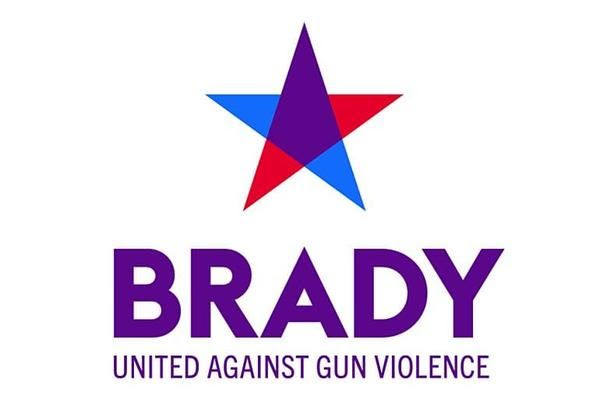
Brady X Poster Gets Undies In A Bundle Over ‘Less-Than-Lethal’ Weapons Proposal Mark Chesnut When an organization goes somewhat berserk on social media, passionately stringing post after post together ostensibly to make some kind of point, you’d normally figure that topic is probably a top priority of that group. That’s why gun-ban group Brady’s recent freak out over less-than-lethal weapons is somewhat bewildering. Brady: NONSENSE Brady, formerly called Handgun Control Inc. before leaders learned that most Americans were against “controlling” handguns, has never seen a gun control scheme that it didn’t embrace. But until the recent flurry of social media activity, so-called less-than-lethal weapons didn’t seem to be on the group’s radar much. That changed big time on November 19, when whoever was handling the organization’s X (formerly Twitter) account. “While the world focused on the Epstein files, Congress took up a dangerous bill that sponsors say is to help law enforcement get greater access to ‘less-than-lethal’ weapons,” Brady posted in a typical manner critical of anything seemingly in the pro-self-defense category. “In reality, it deregulates dangerous weapons to help a billion-dollar weapons industry make more money.” That’s all well and good, but the author seemed not to be able to let the matter go, soon posting more on the topic just a few minutes later. “This bill isn’t from a well-intentioned lawmaker or a group working to prevent deadly police violence,” Brady posted. “It’s backed by the manufacturers of so-called ‘less-than-lethal’ weapons, like tasers, who have started making products that are appropriately classified as guns under the law.” Still apparently not having said enough, the Brady writer entered rant mode with yet a third post a short time later. “In their effort to skirt the regulation of their products, this bill would narrow the definition of firearm and open a new market for untraceable ghost guns, which have already led to thousands of deaths in the last decade,” Brady posted.

Extremely Troublesome Department Of Justice Brief Draws Stark Warning From GOA Mark Chesnut A bold brief, recently filed by the U.S. Department of Justice (DOJ) in a case challenging the National Firearms Act (NFA), has one gun-rights organization sounding an alarm. According to Gun Owners of America (GOA), on November 20, the DOJ, in the case Silencer Shop Foundation v. ATF, filed an “outrageous brief that embraces an alarmingly expansive theory of federal authority.” That assertion runs directly afoul of President Donald Trump’s promise to protect the Second Amendment for all Americans. In responding to GOA and GOF’s “One Big Beautiful Lawsuit,” the DOJ treats Congress’ removal of the historic $200 tax as a pretext to rewrite the limits of congressional power, advancing an argument that would open the door to federal regulation far beyond anything the Framers intended. “GOA and GOF condemn Attorney General Pam Bondi and President Trump’s Department of Justice (DOJ) for doubling down on enforcement of an archaic and unconstitutional law while simultaneously offering legal theories that would expand federal power to historic levels,” GOA said in a news release revealing the DOJ’s actions. “This is especially striking from an administration that had promised to respect the Second Amendment and review burdensome agency rules.” As GOA further explained, the implications of the DOJ’s stance are immediate and ominous.





